Decks with Cast-in-Place Concrete Toppings
Information for Builders
As industry leaders in New Home Warranty, Travelers Canada is committed to educating our builders on ways to reduce claims and improve the construction industry. This commitment includes sharing information on the trends in claims we have received. Over the last number of years there has been a marked increase in structural failures as a result of cast -in- place concrete toppings on decks.
The Problem
Decks with concrete toppings over a waterproofing membrane with the absence of drainage layers, combined with incorrect deck transition detailing and/or poor railing attachment.
- Concrete topping poured directly onto the waterproofing membrane.
- Incorrect deck detailing.
The Result
Concrete has a natural tendency to crack. A damaged membrane then allows the water to penetrate into the deck framing. Lack of a drainage layer between the membrane and the concrete topping eliminates the ability for water to escape. Bad detailing combined with the lack of a capillary break behind cladding traps water and results in decay and structural failure.

- Concrete on vinyl decking membrane, tile cladding not on rainscreen, poor transition detail, top mounted railings.
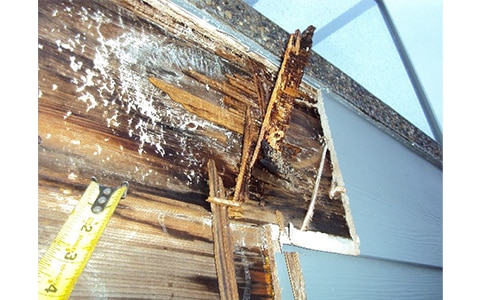
- Deck Membrane terminates at the edge of the deck, no drip flashing present, cladding is not on rainscreen, no building paper present, no overhang of concrete topping and no drip edge to control water.
The Solution
Proper transition details are critical. Cast-in-place concrete topping should never be placed directly onto any waterproofing membrane. At minimum, a slip sheet between the deck membrane and concrete topping is required. Better long-term performance will be achieved with a drainage layer in place between the deck membrane and the concrete topping. Note that membrane manufacturers may void their warranty if no drainage layer is present above their membrane. Torch on 2 ply SBS is recommended for deck membranes with cast-in-place concrete topping applications.
Key points to consider:
- The edge of the deck must have a drip edge to allow for proper water management.
- The transition detail of the deck/posts to wall needs to be done in a way to limit water into the building envelope.
- The transition details of the deck to fascia need to be done in a way to direct water beyond the front face of the fascia board below.
- It is highly recommended to mount the railings on the face of the deck to avoid puncturing the deck membrane.
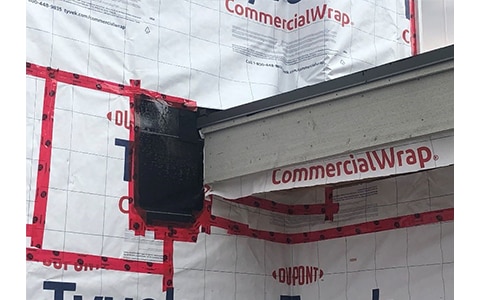
- Torch on SBS membrane on top of deck, building paper in place between the fascia board and the deck as well as between the wall sheathing and the SBS membrane, and a cricket is present at the deck to wall corner.
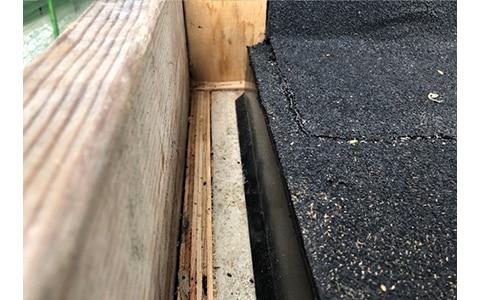
- Drip edge flashing in place for concrete nosing prior to pouring concrete. Note: this torch on SBS membrane still needs to have a slip sheet or drainage layer added.
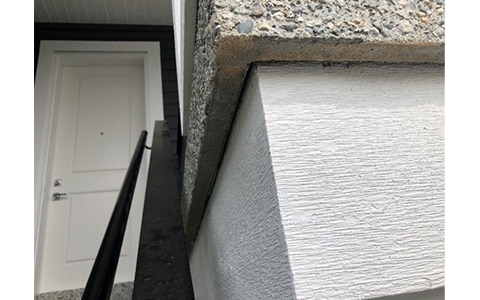
- Finished detail from below. Gap is created by the flashing lip to allow for drainage.
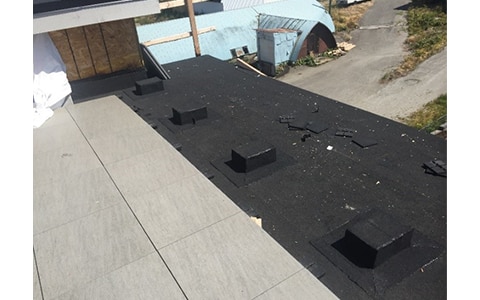
- If installing railings to the top of the deck cannot be avoided, it is recommended to add pedestals to the deck and install membrane over the pedestals and install the railings to the top of the pedestals to elevate the fastener penetrations out of the drainage plane.
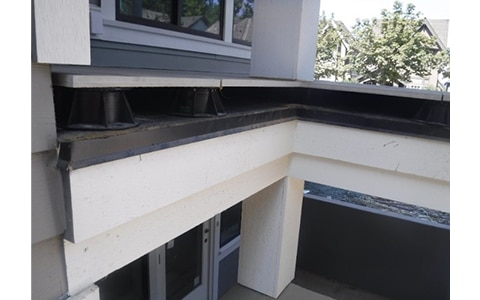
- Tiles on pedestals over torch on SBS membrane, edge of deck flashing in place with torch on SBS membrane on top.
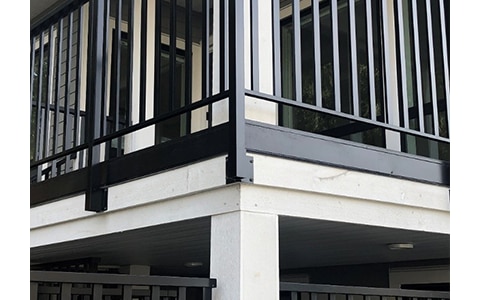
- Tiles on pedestals over torch on SBS membrane, railing in place with an added plate to cover shim system from view.
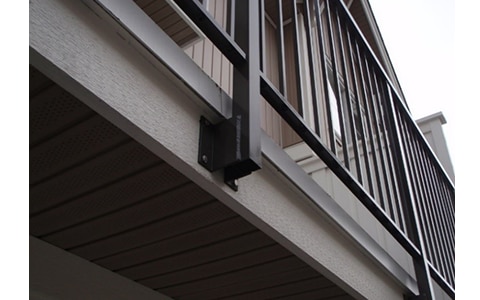
- Face mounted railing detail used, edge of deck flashing installed on extra blocking to help keep the water shedding surface outboard of the fascia board and railing fasteners.
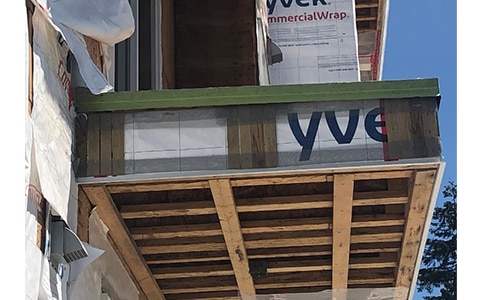
- Rainscreen assemblies are strongly encouraged for the deck fascias, particularly with stucco cladding.
Travelers does not encourage cast-in-place concrete toppings on decks - it is hard to get right, and very expensive to repair in the event of a failure. Cast-in-place concrete is not permitted on decks over living spaces under any circumstances.
The preferred method of adding toppings over membraned decks is to use pavers or tiles installed over pedestals, shims, or “sleeper systems” with a drainage layer.
If using a cast-in-place concrete system cannot be avoided, ensure your details are 100% correct. We also recommend the services of a qualified envelope consultant if difficult details exist. Also, at minimum a slip sheet must be used between the deck membrane and the cast-in-place concrete. The preferred method however, is to incorporate a drainage layer (such as a dimple mat with filter fabric included) between the deck membrane and the cast in place concrete.
For a more comprehensive guide regarding deck construction, please refer to the following publications:
BC Housing’s ‘Building Safe and Durable Decks and Balconies’ bulletin.